You Need More Trees — and So Do I
Plus, how to enhance a beautiful view

Dear Heather, I saw your video as part of the Less Lawn More Life series, and I learned SO much in such a short time that I am suddenly a passionate fan. I have an acre on the Magothy River with multiple climate zones, from marsh to dry meadow to woodland. I’ve focused on growing the meadow for five years now, and it’s a mass of diverse plants, including multiple goldenrod species, milkweeds, opuntia, agastache, asters, grasses, etc. I’ve even started a neighborhood group to encourage people around here to introduce native species. Next, I plan to move a lot of tall things further away from the house and short things closer to create a greater sense of movement. My questions for you: How to delineate zones of the yard where we want a continuous view toward the water, rather than feeling of enclosure? — Barry, Maryland
Thank you — and congratulations on transforming so much of your own property — and for inspiring others through your neighborhood group! Also, totally love your plan to move tall plants away from the house, opening up the views from the house while giving your yard a greater sense of enclosure. As for creating zones — or rooms or destinations — without blocking the view, here are three ideas:
Mow destinations into your meadow. People sitting in an area up to twelve feet in diameter will feel enclosed by a four-foot meadow, according to the Law of Significant Enclosure. (This “law” is supposedly based on behavioral studies, but I was unable to find them.)
The law of significant enclosure says that we feel enclosed when the vertical edge of a space is at least one-third the length of the horizontal space we’re inhabiting. — Garden Design
Interrupt the view with semi-transparent focal points. These might be a prominent seating area, a low hedge, or a split rail fence that divert the path from the house to the water. Or a small tree that diverts the eye as you walk to the water. The point is to extend the anticipation and enjoyment of the view by distracting attention from it at various points.
Frame the view. Alternatively or additionally — and perhaps in the course of the same path — frame the view with an arbor or between two tall narrow trees.
All these methods provide opportunities to introduce vertical interest — and more native plant species — and to vary your planting zones.
— Heather
P.S. Wild Ones is hosting a live, virtual version of the workshop Barry mentions on Tuesday, December 9, at 6 p.m. ET. Register here now.
P.P.S. Keep those comments and questions coming, please. They fuel this newsletter!
Why, How, Wow!
As flowers fade, trees — which we barely notice all summer — become the stars of the garden.
As autumn approaches, we are reminded of its beauty by the rich and rapidly changing leaf colours produced by trees as they prepare for winter. The production of green chlorophyll shuts down, exposing red anthocyanins and yellow and amber carotins inside the leaves, resulting in trees with wonderful ornamental attributes at this time of year. — The English Garden
In much of North America, it’s still a great time to plant trees. But even if you prefer to wait until early spring, it’s worth sourcing them now. Ed Moura of Prickly Ed’s Native Plant Emporium in Rhode Island pointed out that the trees (and shrubs) I will plant in the spring already exist at a grower somewhere. He’s already placing his spring order and I’m sending him my final later today.
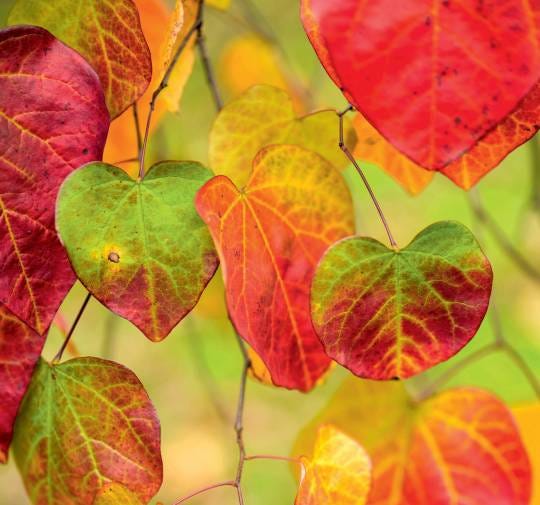

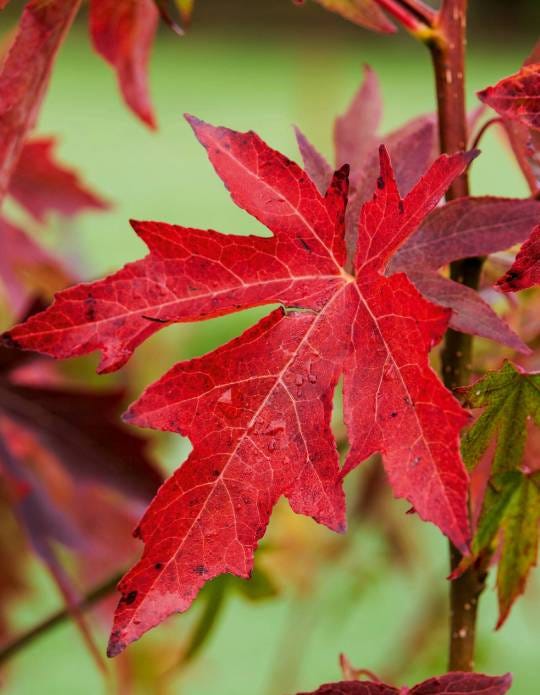
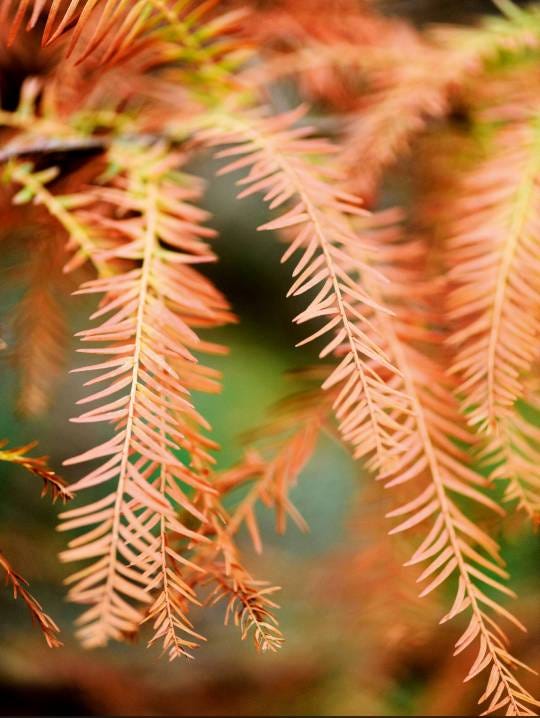
Why? Shade, glorious shade
Among the many, many reasons to plant trees is the cooling shade they provide in a warming world. They make yards more comfortable and even cut energy costs.
Properly placed trees around buildings can significantly reduce energy consumption, cutting air conditioning needs by 30% and saving 20–50% on heating costs. In Cincinnati, community trees save the average household $56 annually in cooling costs, totaling $4.8 million in savings across the city. The U.S. Department of Energy estimates that positioning just three trees strategically can reduce a household’s energy bills by $100 to $250 per year, lowering overall energy use by up to 25%. — Arbor Day Foundation
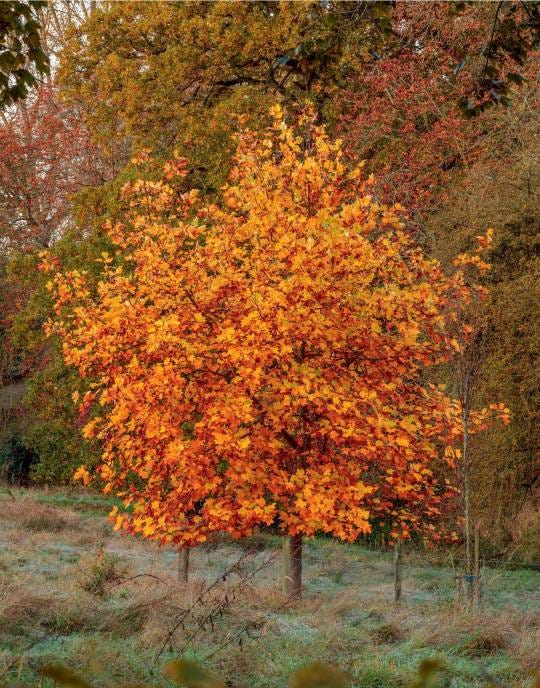
How: Some criteria for choosing trees
But with so many species, how to choose? Here are some criteria:
Ecological goals, like hosting or nourishing a specific species (including humans) or maximizing the number of hosted caterpillars for nestling nourishment. To find the keystone genera that host the most caterpillars near you, input your zip code at https://nativeplantfinder.nwf.org/. (Apologies to readers who tried last time and got a bum link!)
“Right plant, right place” — native range and, most importantly, sunlight and moisture conditions. This is non-negotiable (with a little wiggle room for native range). You can filter for these criteria and more at wildflower.org/plants. Also helpful is The Sibley Guide to Trees.
Design goals, e.g., shade, color, repetition, transparency, focal point, screening, etc. You can find size, shape, leaf retention (evergreen or not), and more in the plant profiles at wildflower.org/plants.
Speed of growth. I’m impatient, so I pay a lot of attention to this, though it’s often buried in the fine print. Keep in mind that tree heights represent the tallest ever and it may take decades to reach. For info on tree growth and purchase size, see What If It’s Too Tall?
Diversity. The more different trees, the more different species of life you support. Within your broader environment, you want to avoid trees that are over-planted, which can be wiped out by a disease. In Milwaukee, for example, a majority of street trees died over the course of just a few years when Dutch elm disease struck in the 1960s. Beeches, hemlocks, chestnuts, oaks, ashes, and lindens are currently facing such pathogens in various parts of the country.
After screening for all the above, you will likely still have too many choices. So go for fabulousness. Here are some inspo images from the latest issue of The English Garden, which is filled with North American native trees.
Wow! Tree fabulousness in situ
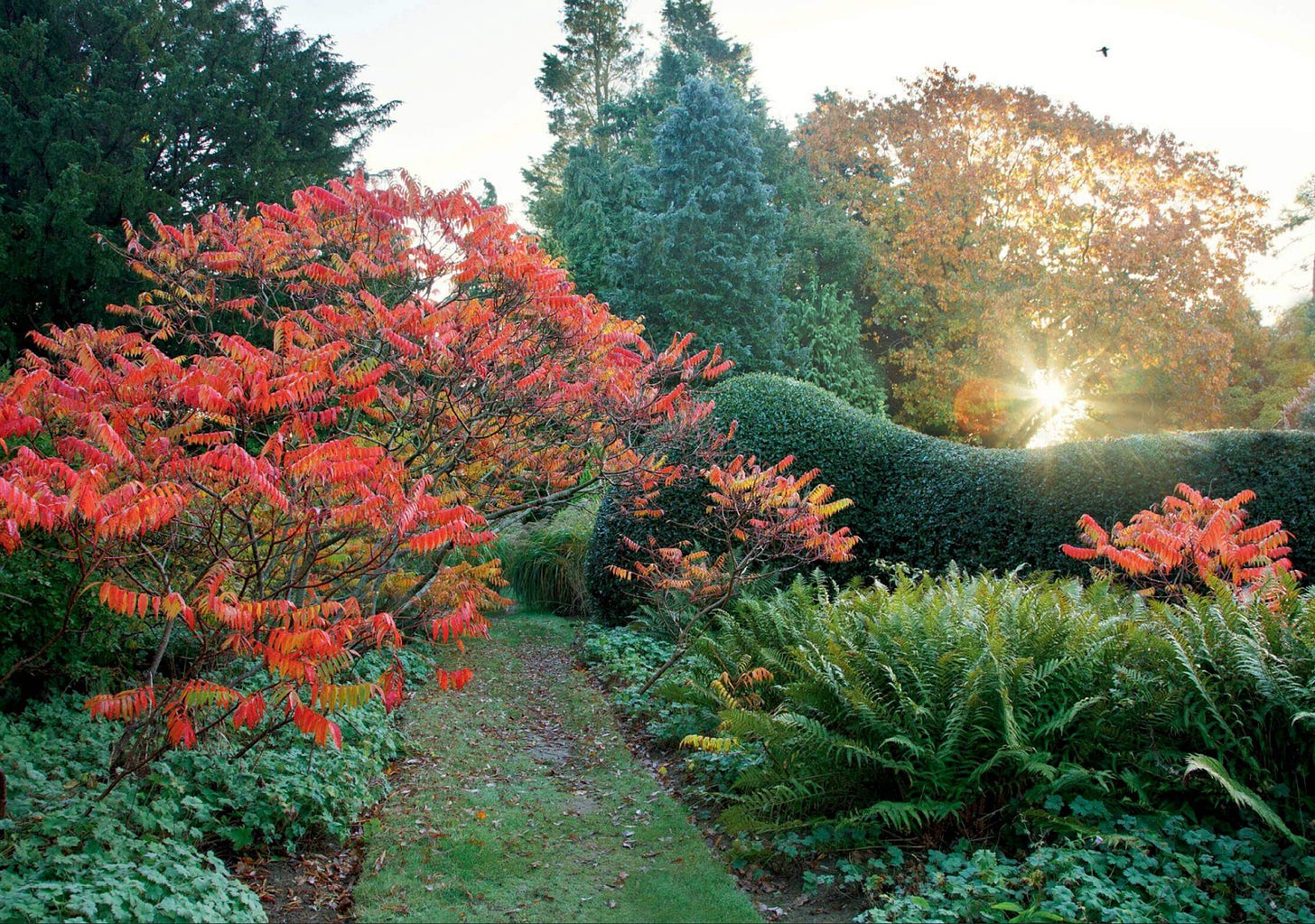
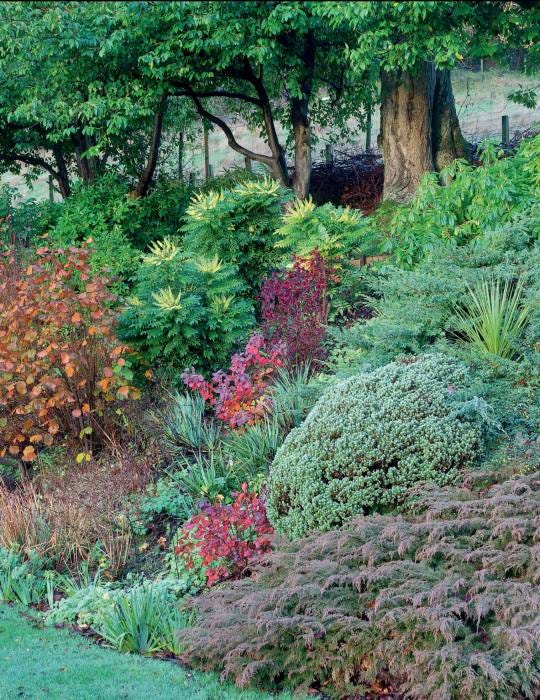
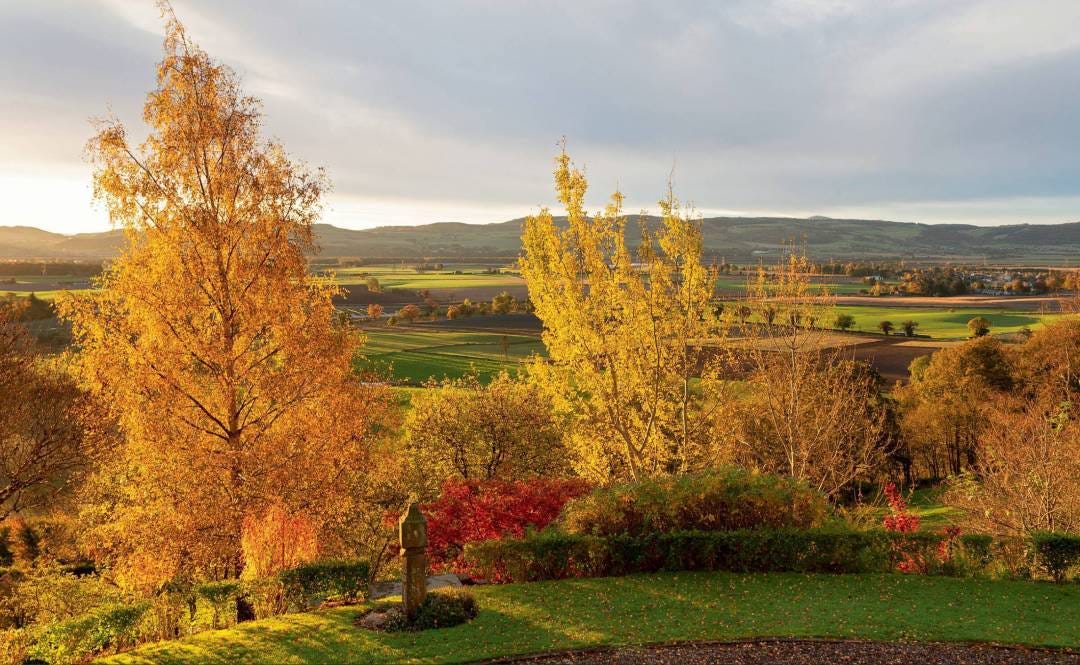
Wildr Update
How healthy is your yard? Get your score at go-wildr.com.
Our Rhode Island yard scored 70, making it “Critter Central” three years into its transformation from mostly lawn to mostly native plants. Zoe, who’s now head of operations at Wildr, tells me that’s well above the average of 51.
According to the breakdown, we’re doing all the right things for habitat diversity and yard management. (Phew!) Learning more about the insects in our yard and submitting sightings to iNaturalist will also improve our score. What else? Pete and I need to plant more trees. On our list for spring: sweetgum, winterberry, black willow, and eastern red cedar.
Ecological Landscaping Miscellany
ICYMI, learn to take pics like the ones above in Capture Peak Garden Now with Your Phone.
A video to share with friends and neighbors: America’s Dumbest Crop.
Read about the vulnerability of street trees and find which genus dominates your metro area in the Washington Post (gift link).
A new study found that simple, rhythmic sounds — like the chirping crickets we hear as we sit or stroll in our yard — can reshape the brain’s entire network landscape.


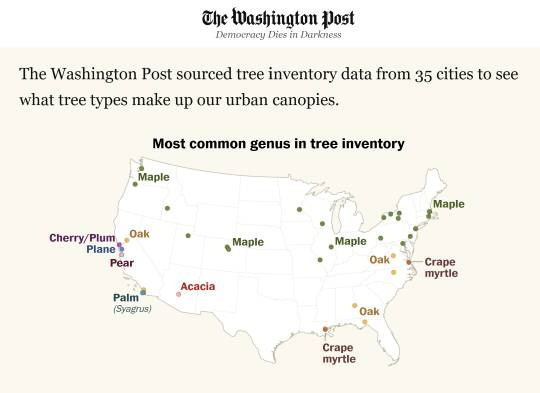
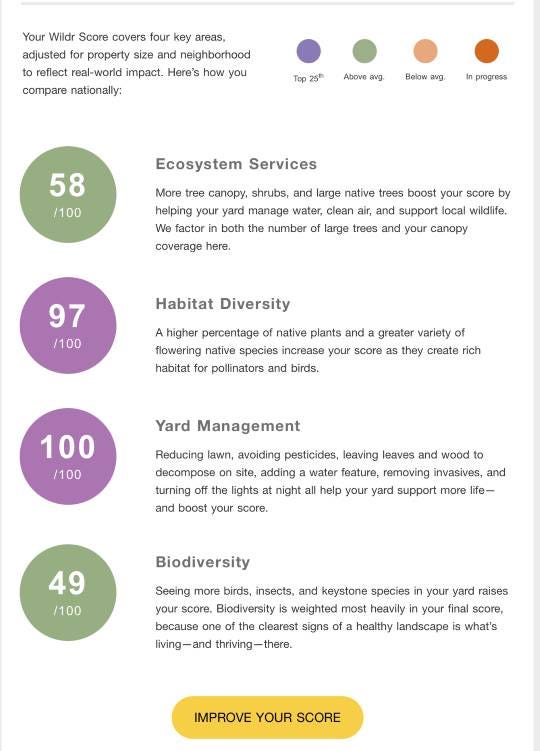
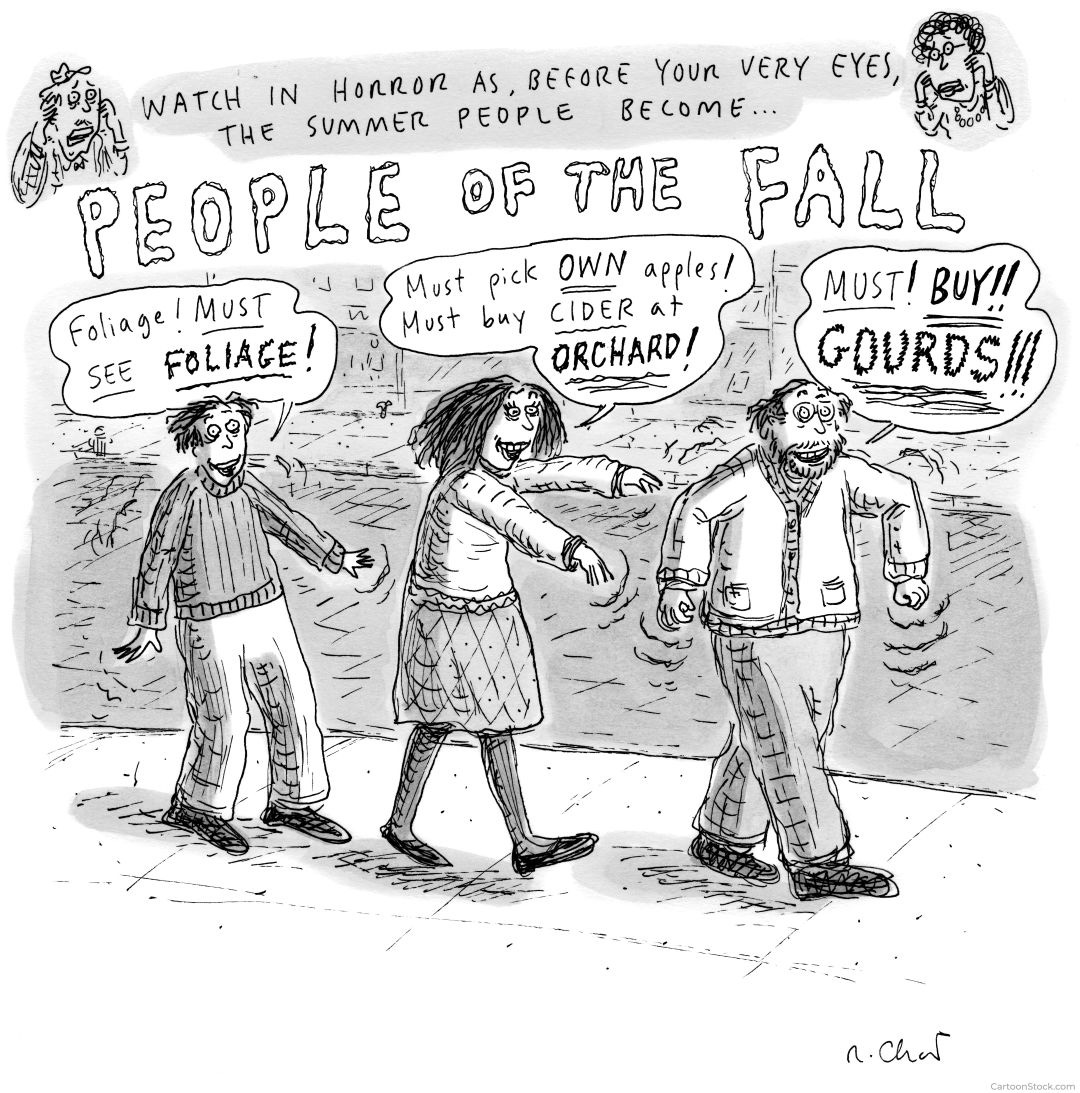
Yay trees! As the asker of the question “but how do you visualize the size of full grown trees!!??” and just finding them daunting in general, I wanted to update that I’ve since purchased a few trees and shrubs! Our yard is now home to 2 x American plums, 1 nannyberry, 1 witch hazel, 1 high bush cranberry, and 3 x bayberries. I found an alternate leaf dogwood seedling in a garden bed that I hope to keep growing, and next year am hoping to add a hop tree, mountain ash and maybe even a northern pin oak.
Somehow the tremendous size and lifespan of some tree species has switched from daunting to calming, and it’s become a source of comfort to step back and think on a larger scale and size. Thanks so much for being part of my tree journey!
Definitely have not thought this thoroughly about tree placement around my house before. Thanks for sharing!